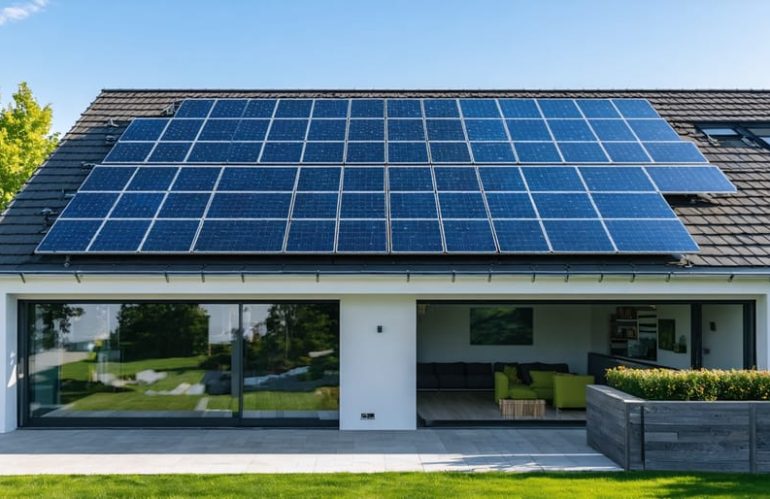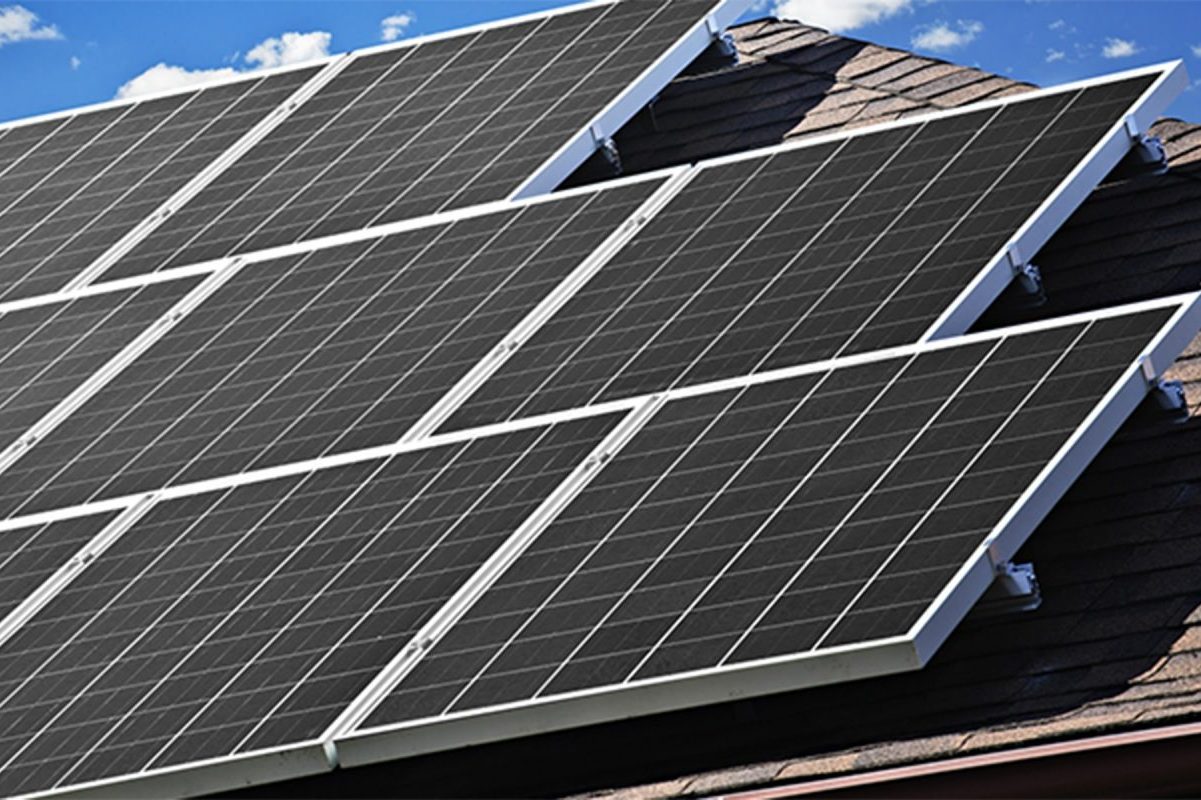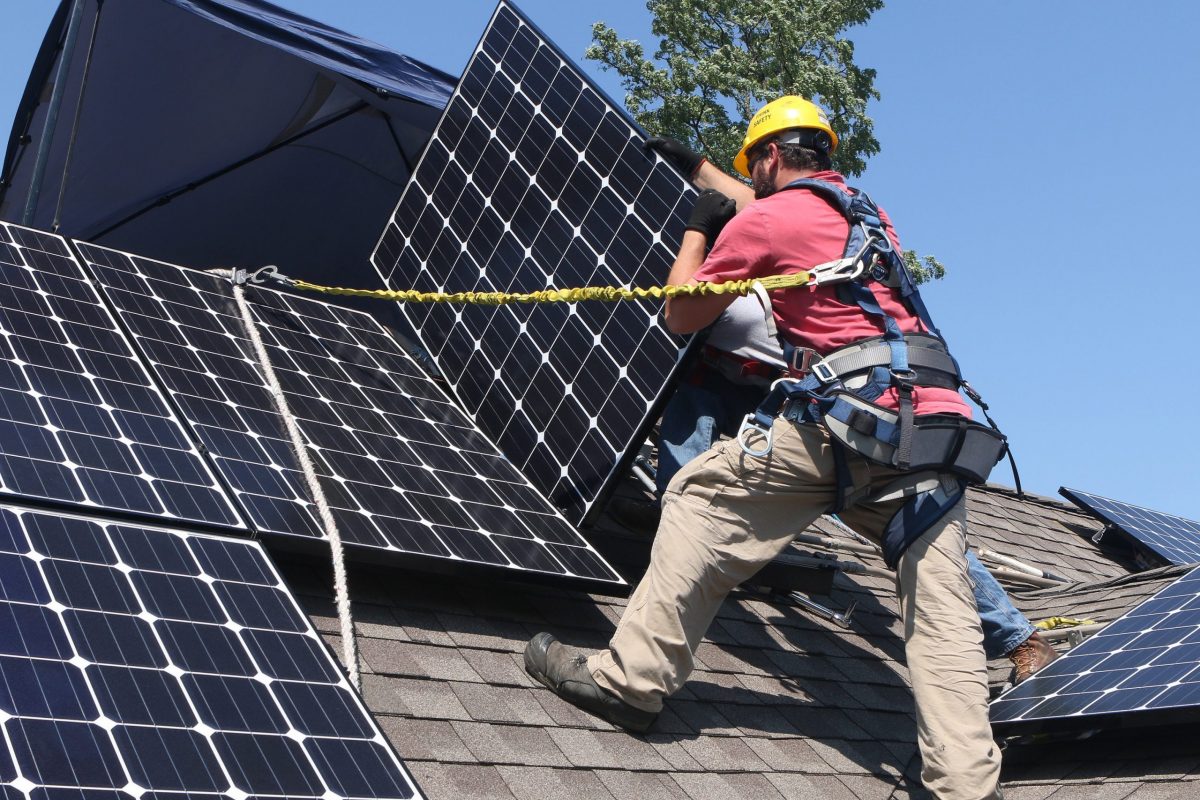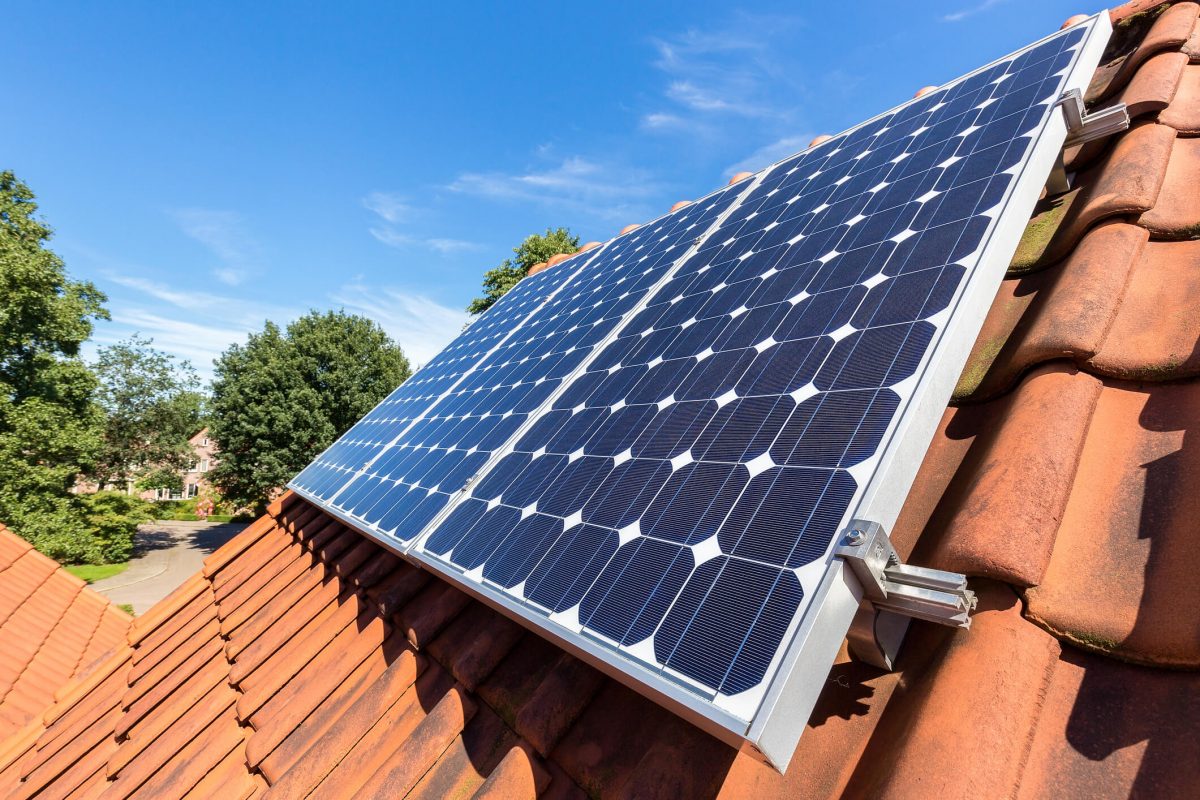Solar innovation has entered a remarkable new era, with revolutionary solar technologies transforming how we power our homes and businesses. Recent breakthroughs in photovoltaic efficiency have pushed panel performance beyond 25%, while cutting production costs nearly in half compared to just five years ago. These advances aren’t just laboratory experiments – they’re reshaping the residential solar landscape right now.
Perovskite solar cells, transparent panels, and bifacial modules represent the cutting edge of solar innovation, offering homeowners unprecedented flexibility in where and how they can harness solar power. These next-generation panels adapt to challenging environments, generate power from both sides, and integrate seamlessly into building materials, making solar adoption more practical and aesthetically pleasing than ever before.
The impact extends beyond technical specifications – today’s solar innovations directly translate to faster return on investment for homeowners, with many systems now paying for themselves in under five years. Combined with enhanced durability and smart monitoring systems, modern solar technology offers a compelling solution for sustainable living that’s both financially sound and environmentally responsible.
Game-Changing Solar Panel Technologies
Perovskite Solar Cells
Perovskite solar cells represent one of the most exciting breakthroughs in solar technology in recent years. These innovative cells use a hybrid organic-inorganic lead or tin halide-based material as the light-harvesting active layer, offering several advantages over traditional silicon panels.
What makes perovskite technology particularly appealing for homeowners is its potential to dramatically reduce solar panel costs while increasing efficiency. These cells can be manufactured at much lower temperatures than silicon cells, requiring less energy and specialized equipment. This translates to potentially lower purchase and installation costs for homeowners in the near future.
Another significant benefit is perovskite’s excellent light absorption capabilities. These cells can capture sunlight effectively even in low-light conditions, making them ideal for regions with variable weather patterns. They’re also incredibly lightweight and can be made semi-transparent, opening up new possibilities for integration into windows and other building materials.
Perhaps most exciting is the potential to layer perovskite cells over traditional silicon panels, creating “tandem cells” that could achieve efficiency rates above 30% – significantly higher than current standard panels. While this technology is still being perfected for widespread commercial use, many experts believe perovskite solar cells could revolutionize home solar energy within the next few years, making clean energy more accessible and affordable for homeowners everywhere.

Bifacial Solar Panels
Imagine a solar panel that can capture sunlight from both sides – that’s exactly what bifacial solar panels do. These innovative panels collect direct sunlight on the front while simultaneously harvesting reflected light on the back, significantly boosting their energy production potential.
The back side of these panels can capture up to 30% additional energy from light reflecting off surrounding surfaces like white roofs, light-colored ground cover, or even snow. This means homeowners can generate more power using the same roof space compared to traditional single-sided panels.
What makes bifacial panels particularly exciting is their versatility. They work exceptionally well in ground-mounted installations where light can easily reach both sides, but they’re also proving valuable in residential rooftop applications. When installed with light-colored roofing materials or slightly elevated from the surface, these panels can increase energy production by 5-15% compared to conventional panels.
While bifacial panels typically cost slightly more upfront, their increased energy generation often results in better long-term savings. They’re especially effective in snowy regions, where reflected light from snow can significantly boost winter energy production. Many homeowners find that the additional energy generated more than makes up for the initial investment, particularly in areas with high electricity rates.

Policy Changes Driving Innovation
Tax Incentives and Rebates
The federal government’s renewed commitment to clean energy has created unprecedented opportunities for homeowners looking to invest in solar technology. The Solar Investment Tax Credit (ITC) now offers a generous 30% tax credit on the total cost of solar panel installation, including equipment and labor, through 2032. This means a $20,000 solar system could result in $6,000 in direct tax savings.
Many states have introduced additional incentives to complement federal programs. These include property tax exemptions, sales tax exemptions, and performance-based incentives that pay homeowners for the energy their systems produce. Some states even offer cash rebates that can reduce initial installation costs by thousands of dollars.
Local utilities are also getting involved, providing net metering programs that allow homeowners to sell excess power back to the grid. Some utility companies offer special time-of-use rates that benefit solar users, maximizing savings during peak production hours.
For those interested in cutting-edge solar technology, specialized rebates are available for systems incorporating battery storage or high-efficiency panels. Many local governments have streamlined permitting processes and reduced associated fees, making the transition to solar even more affordable.
To maximize these benefits, homeowners should consult with certified solar installers who can identify all available incentives in their area. Many of these programs have limited funding or deadlines, so timing your solar investment strategically can lead to optimal savings.
Research Funding Initiatives
Government support for solar innovation has reached unprecedented levels, with major initiatives driving rapid advancement in photovoltaic technology. The U.S. Department of Energy’s Solar Energy Technologies Office (SETO) has committed over $200 million annually to accelerate breakthrough technologies, making solar more affordable and efficient for homeowners.
Recent federal programs have specifically targeted next-generation solar materials, with substantial grants supporting research into perovskite cells and bifacial panels. These investments are already showing promising results, as researchers develop panels that can capture more sunlight while using fewer materials, directly translating to lower costs for homeowners.
State-level incentives have also played a crucial role, complementing federal efforts with matching funds and tax benefits. California’s ambitious solar initiatives, for example, have helped establish testing facilities where new technologies can be validated under real-world conditions. This has accelerated the path from laboratory to market, ensuring homeowners have access to proven, reliable innovations.
International collaboration has further amplified these efforts, with research partnerships driving global solar adoption trends and shared technological advances. The European Union’s Horizon program and similar initiatives in Asia have created a worldwide network of researchers working towards common goals in solar efficiency and affordability.
For homeowners, this surge in research funding means more efficient and affordable solar options are continuously entering the market, making the switch to solar power increasingly attractive and cost-effective.
Real-World Impact for Homeowners
Enhanced Energy Production
Recent residential solar innovations have dramatically improved the energy production capabilities of home solar systems. Today’s panels can convert up to 23% of sunlight into electricity, compared to just 15% a decade ago. This increased efficiency means homeowners need fewer panels to power their homes, reducing both installation costs and roof space requirements.
Bifacial solar panels, which capture sunlight from both sides, can boost energy production by an additional 5-30% depending on installation conditions. These panels work particularly well when mounted over light-colored surfaces or in snow-prone areas, where reflected light can significantly enhance power generation.
Advanced tracking systems now allow panels to follow the sun’s movement throughout the day, increasing energy yield by up to 45% compared to fixed installations. While these systems were once limited to commercial applications, new compact designs make them practical for residential use.
Anti-soiling coatings and self-cleaning surfaces help maintain peak performance by preventing dirt and debris accumulation. These features can improve annual energy production by 3-4% while reducing maintenance needs. Combined with smart monitoring systems that optimize panel performance in real-time, homeowners can expect more consistent and reliable energy production throughout the year.
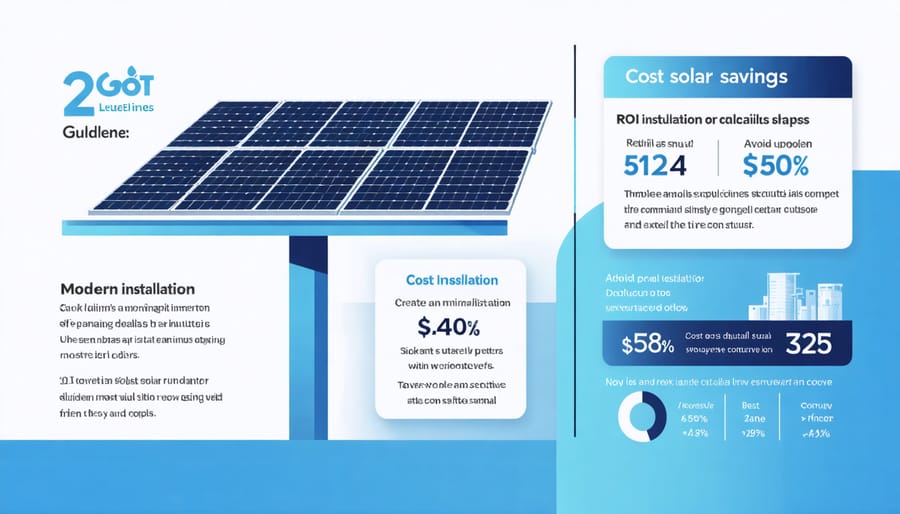
Cost Savings and ROI
Recent innovations in solar panel technology have dramatically improved their cost-effectiveness, making them an increasingly attractive investment for homeowners. Modern solar installations typically pay for themselves within 5-7 years, compared to the 10-15 years required just a decade ago. This accelerated return on investment is due to both improved efficiency and declining installation costs, which have dropped by more than 70% since 2010.
For the average household, switching to solar can result in monthly electricity savings of $100-$200, adding up to significant annual savings of $1,200-$2,400. When combined with federal tax incentives, which currently offer a 30% credit on installation costs, and state-specific rebates, the initial investment becomes even more manageable.
New bifacial panels, which capture sunlight from both sides, can increase energy production by up to 30% compared to traditional panels, directly translating to greater savings. Smart monitoring systems help maximize these benefits by optimizing panel performance and identifying maintenance needs before they become costly issues.
The long-term financial benefits extend beyond direct energy savings. Modern solar installations typically increase property values by 4-6%, with energy-efficient homes selling faster and at premium prices. With most solar panels now warranted for 25-30 years, homeowners can expect decades of reliable energy production and continued savings, making solar technology one of the most financially sound home improvements available today.
As we look to the future, the solar industry’s rapid innovation shows no signs of slowing down. From flexible solar films that can cover entire buildings to high-efficiency panels that generate more power in less space, these advancements are making solar energy more accessible and practical than ever before. The growing competition in emerging solar markets continues to drive prices down while pushing technology forward.
For homeowners, this means more options and better returns on investment. The combination of improved efficiency, reduced costs, and innovative financing solutions has transformed solar power from a luxury into a practical choice for energy-conscious consumers. Smart home integration and energy storage solutions are making it easier than ever to maximize the benefits of solar installations.
As we embrace these innovations, the future of solar energy looks remarkably bright. The technology continues to evolve, becoming more efficient, more affordable, and more adaptable to diverse needs. Whether you’re looking to reduce your carbon footprint, cut energy costs, or increase your home’s value, there’s never been a better time to consider solar power. With continued research and development, we can expect even more groundbreaking advances that will further revolutionize how we harness the sun’s energy for our homes and communities.

